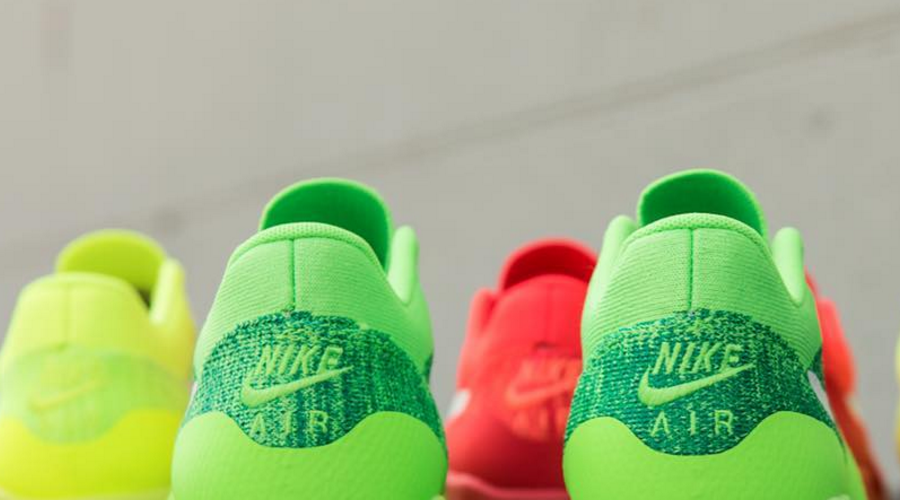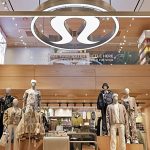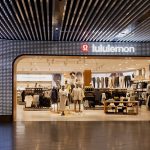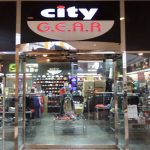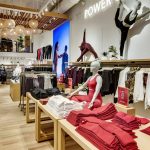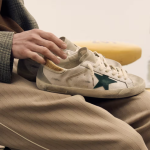The Finish Line Inc. (Nasdaq:FINL) reported sales gained momentum during its fiscal 2017 second quarter ended August 27, driving same-store sales up 5.1 percent, albeit at some cost to margins. Net profit dipped, but were in line with Wall Street’s consensus estimates.
The more encouraging news is that the supply chain issues that dragged down the company’s performance starting in the third quarter of last year have been fixed, and aggressive markdowns this past quarter were able to right-size inventories as the footwear chain nears the critical fall/holiday selling period.
“We are pleased to report that we are now at, and in most cases above, historic levels on all key metrics such as direct-to-consumer fulfillment rates, speed of delivery and cancellations,” said Sam Sato, the company’s CEO since February, on a conference call with analysts.
Finish Line said its third quarter will include severance-related charges and other costs as part of its ongoing restructuring activities. Also, Glen Lyon, its former CEO, has transitioned to non-executive chairman of its board, an acceleration of plans due to the progress Finish Line has made around building its organizational structure since February, officials said.
In its fiscal second quarter, net earnings slid 14.8 percent to $22.1 million, or 53 cents a share, matching Wall Street’s consensus estimate. Sales rose 5.4 percent to $509.4 million, slightly ahead of expectations.
Finish Line comparable store sales increased 5.1 percent, ahead of estimates and accelerating from the 1.5 percent gain seen in the first quarter. Comps were up 6.2 percent in June, up 7.2 percent in July, and ahead 3 percent in August. Comp sales for September month to date are up low single digits at its Finish Line banner.
Sato said the sales improvement in the quarter was fueled by the combination of an improving product assortment and better in-stock positions. Similar to its first quarter, retro running and basketball shoes, along with casual running styles from several brand partners, led the gains.
Comps were up in the mid single digits in running, mid teens in basketball and up low-20 percent in casual.
Robust Footwear Gains
Men’s high-single-digit comp gains were led by multiple iterations of Nike’s Huarache, Max Air and Presto models. Adidas “remains on fire” across several platforms led by Superstar, Stan Smith, NMD, AlphaBounce and Ultra Boost, said Sato. Under Armour’s Slingride knit running shoe was also a standout.
In men’s basketball, Under Armour’s Curry 2.5 saw an “explosive debut.” Added Sato, “The strength of this iconic platform continues with each new signature product introduction, which bodes well for the upcoming launch of Curry 3 later this quarter.” Retro and retro-inspired product again drove gains at Jordan.
In the women’s category, comps increased low double digits led by a number of different styles such as the Pegasus, Roche Run, Huarache and Thea from Nike as well as “tremendous strength” across its entire Adidas offering, including AlphaBounce and Pure Boost in running and Superstar and Stan Smith from Originals. Puma was also strong, fueled by classics and a demand for Fierce, which is fronted by Kylie Jenner, and Fenty by Rihanna.
Kids footwear increased high single digits on a comp basis, supported by ongoing strength in Jordan retro and Adidas Originals, as well as the launch of Curry 2.5.
Softgoods comped down double digits in the quarter due to weakness in apparel and accessories. Assortments are being narrowed to match demand, and softgoods now makes up approximately 8 percent of the total Finish Line brand sales. Sales at the company’s Macy’s shop-in-shop business totaled $77.4 million, up 27.3 percent overall and ahead in the mid-20 percent range on a comp basis.
JackRabbit, its run specialty segment, saw sales reach $24.2 million, down slightly compared to last year due to six less stores in operation versus a year ago, including one closed during the quarter. JackRabbit’s comps were up low single digits.
Margins Impacted By Liquidation Efforts
The bottom line was impacted by a decline in consolidated gross margin of 170 basis points to 31.3 percent from the same period a year ago. That was lower than expected due to the aggressive markdowns to reduce higher inventory levels caused in large part by the supply-chain disruption.
Consolidated SG&A expense was 24.4 percent of sales, flat to a year ago. Approximately $1 million in incremental supply-chain expenses were spent during the quarter, with expense management offsetting those costs. Inventory was up 1.6 percent on a consolidated basis at the end of the second quarter, an improvement after ending the first quarter with inventories ahead 9 percent.
Finish Line- and JackRabbit-owned inventory were both down low single digits, while Macy’s inventory was up high single digits. Said Finish Line CFO Ed Wilhelm, “Our inventory agings are clean across all businesses, and we are well-positioned going into the fall and holiday seasons.”
New Store Format
At the Finish Line banner, the most significant development is the debut of its newest store format in 15 locations, including eight in the Chicago area during the second quarter. The updated layout features a modernized design palette, including a refresh of the Finish Line logo, storefront, floor fixtures and shoe walls. Digital displays are being used to highlight key innovation stories and new product launches from key brand partners including Nike, Adidas and Under Armour.
“The initial feedback from our store associates, vendor partners and most importantly our customers has been extremely positive,” Sato said. “On top of this, sales trends post remodel have been very encouraging. That said, it is still early and therefore we plan to gather more data before we share any specific numbers around comp lift and return on investment.”
Approximately 50 stores will be updated with the new design this year, and the new format will reach “a significant portion” of the company’s fleet over the next three years. At the same time, Finish Line continues to focus on creating a “smaller, more profitable brick-and-mortar footprint.” Five locations were closed in the quarter, a total of 65 have been closed over the past 18 months, and another 12 are set to close over the remainder of this year.
Online, recent upgrades that have led to faster site navigation and a quicker checkout process are expected to improve conversion rates. During the second quarter, mobile sales were up strong double digits, fueled by a mid-20 percent increase in conversion. Mobile traffic now makes up over two-thirds of its total digital visits.
A Shoes So Fresh campaign in partnership with Adidas that included an appearance from hip hop star Mac Miller drove more than 22 million video views on YouTube to date. A partnership with SnapChat and their NBC Olympic Discover channel also supported “sizable gains in brand awareness,” and more campaigns are set for the holiday quarter.
Macy’s Driven By Kids And Digital
Finish Line’s in-store shop business in the quarter was driven by “exceptional growth” in kids and strong growth online through macys.com. Kids is now available in approximately 240 doors, up from 165 in the first quarter and on schedule to end the year with kids in close to 300 locations. Kids sales through macys.com “have been surging” with expanded assortments. For the second quarter, kids sales increased triple digits and now represent about 15 percent of Macy’s business.
Digital sales at Macy’s were also up triple digits and now represent more than 20 percent of the total volume. Also helping Macy’s momentum is the repositioning or expansion of 108 shops. Another 25 to 30 will be repositioning or expanding in the second half of its year. Overall, Finish Line closed the quarter with 391 athletic shops inside Macy’s. Said Sato, “Looking ahead, we remain confident in our ability to deliver the fiscal year 2017 targets we have established for Macy’s and exceed the high-end of our long-term goal of annual sales of $350 million.”
JackRabbit Profit Below Targets
At JackRabbit, Sato said the business comped positively for its third straight quarter led by strong gains in online sales. However, he said “there remains a lot of work ahead, a lot to improve profitability before we consider reaccelerating our expansion of this concept.”
Asked by an analyst if the company would explore “other more strategic options” for JackRabbit if the business continues to underperform, Sato said the JackRabbit team has “done a great job of getting their inventories in shape both from a quantity and quality perspective” but profitability and sales “milestones” remain below expectations. “We remain committed to this business, but as I said, until we start achieving those milestones, the decision to reinvest in the business is still open. But we are committed to making a decision on JackRabbit before the end of this fiscal year.”
JackRabbit ended the second quarter with 70 stores. Regarding its focus on enhancing leadership, Sato said the leadership transition has progressed ahead of plan, including several hires supporting key positions. He added, “I am confident that we are moving forward with the right executive team in place to further strengthen the fundamentals of the business and successfully execute our growth plans.”
Sato was also upbeat on the company’s further commitment to driving consistent profitable growth. That’s being accomplished through the streamlining of operations to help speed up decision making as well as lowering cost structure to provide flexibility to make “real-time incremental investments” to drive sales and earnings.
The third quarter will include severance and other charges related to those streamlining efforts that are expected to generate net cost savings of approximately $6 million on an annualized basis. About $1 million of those savings are expected to support fourth-quarter results.
Healthy Holiday Outlook
Looking to current trends and holiday selling, Sato remarked that the Summer Olympics, as expected, helped escalate interest in sports, with the heightened demand benefiting many of Finish Line’s top footwear products in the marketplace.
“While the current bestseller list is dominated by casual and retro styles, we are also seeing pockets of strength within performance from a number of brand partners,” Sato said. “Our current momentum, combined with the pipeline of new product, should continue to fuel excitement for the entire footwear category during the upcoming holiday season.”
For the fiscal year ending February 25, 2017, the company still expects Finish Line comparable store sales to increase in the 3 to 5 percent range and earnings per share to be between $1.50 and $1.56.
Given that supply chain challenges impacted the year-ago third quarter with a negative 6 percent comp, Finish Line is expecting strong third-quarter gains. Comps are expected to be up in the high-single-digit range and “significant improvement” in gross margins is expected.
Photo courtesy Finish Line

